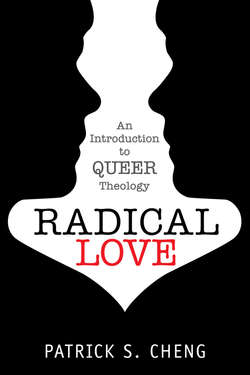Читать книгу Radical Love - Patrick S. Cheng - Страница 32
На сайте Литреса книга снята с продажи.
Relational Theology
ОглавлениеThe third strand in the evolution of queer theology is relational theology. This strand was developed primarily by lesbian theologians as a response to the silence in gay male theology about women’s issues and the importance of feminist theological reflection. This strand of queer theology focused not so much on issues of acceptance or liberation, but rather finding God in the midst of the erotic—that is, mutual relationship— with another person.
Lesbian theological voices first started to emerge in the late 1960s and early 1970s. In the beginning, these writings were primarily apologetic in nature. For example, in 1969 Barbara B. Gittings wrote an essay called “The Homosexual and the Church” in which she argued that it was the duty of the Christian church to welcome lesbians and gay men. She argued that the church should “make an affirmative, active effort to accept and welcome the homosexual, unreservedly and openly … and to equality in the worship of his [sic] God.”19Interestingly, Gittings wrote only about the “homosexual” in generic terms and did not make a distinction between lesbians and gay men.
In 1971, Del Martin and Phyllis Lyon—the founders of the Daughters of Bilitis, which was the first social and political group for lesbians in the United States—wrote “A Lesbian Approach to Theology.” In that essay, Martin and Lyon challenged various stereotypes about lesbians, including the stereotype of a “predatory, masculinized woman who spends all her time seducing young girls.” Martin and Lyon, who also worked with the Council on Religion and the Homosexual in San Francisco, argued that the “despairing homosexual” must understand that “he [sic] too is a child of God.”20
In 1974, Sally Gearhart wrote an essay, “The Miracle of Lesbianism,” which was published in the Loving Women/Loving Men anthology. This essay was an important step toward the development of relational theology because it focused upon the importance of relationships for lesbians. For Gearhart, the “cause” of lesbianism is nothing more than a self-love that “expresses itself in love of other women and thus in rebellion of a woman-hating society.” Being a lesbian is a “mind-set, lifestyle, a body of experience” of being truly “woman-identified,” whether or not that is expressed in terms of a physical relationship with another woman. As such, Gearhart argued that lesbians can be reunited with their heterosexual sisters through feminism.21
A significant turning point in relational theology occurred in 1989 with the publication of Touching Our Strength: The Erotic as Power and the Love of God by Carter Heyward. In that book, Heyward draws upon Audre Lorde’s view of the erotic as sacred and argues that God is not extrinsic to sex or gender, but rather “is immersed in our gendered and erotic particularities.” For Heyward, God exists in the connection that women have with “body and nature and darkness and moisture and dirt and sex.”22 What was distinctive about Heyward’s work was that not only did it draw upon her embodied experiences as a lesbian, but it also was a different way of doing theology.
Following Heyward, a number of lesbian theologians have also focused on relationality in their theological works. This included Mary E. Hunt, the cofounder and codirector of Women’s Alliance for Theology, Ethics, and Ritual (WATER), who in her 1991 book Fierce Tenderness: A Feminist Theology of Friendship
